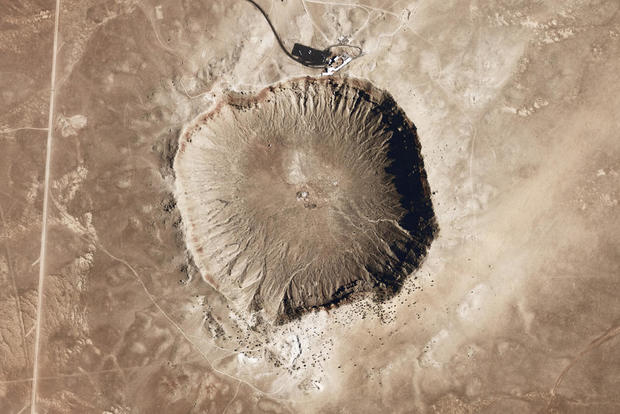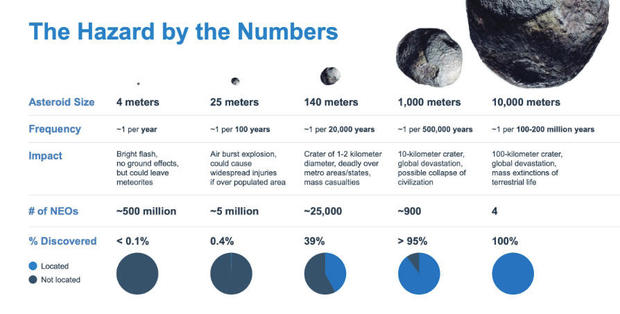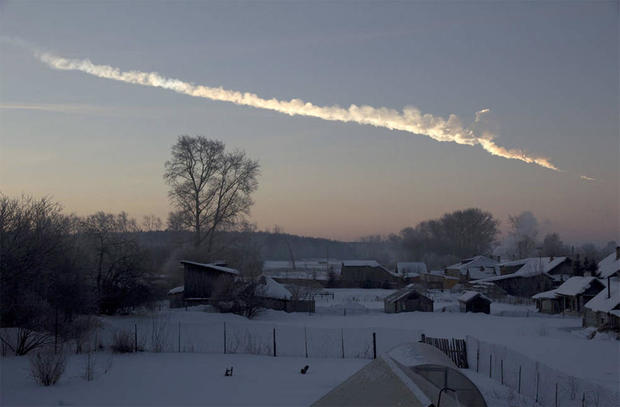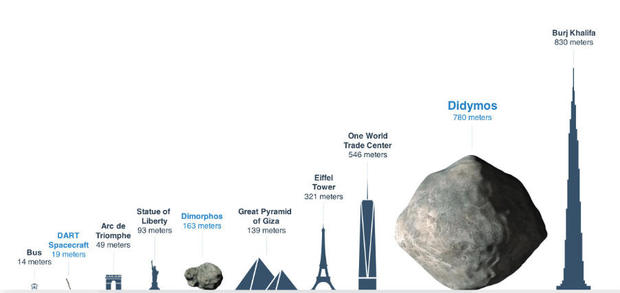30.01.2022

In the sci-fi satire "Don't Look Up," humanity is wiped out by a huge comet after a highly politicized and comically botched attempt to blow it up before impact.
As it turns out, breaking up a real "planet killer," thus saving humanity from extinction, is within the realm of possibility, at least in theory, using near-current technology, two physicists conclude in a paper appropriately titled "Don't Forget To Look Up."
Philip Lubin and Alexander Cohen of the University of California at Santa Barbara show that a roughly 6-mile-wide asteroid or comet — one comparable to the body that wiped out the dinosaurs 65 million years ago — could be broken apart and dispersed by nuclear explosives even if it was discovered just six months before impact.
But following the movie scenario, it would require very quick action: launch of heavy-lift rockets like NASA's Space Launch System moonship or SpaceX's Starship within a month of discovery, and delivery of multiple nuclear penetrators a month or so before impact that would have to burrow into the body's crust like bunker-busters before detonating.
While some might argue such a speedy response is politically, if not technically, unrealistic, it is at least possible, the physicists conclude.
"We have shown that for the extreme case of a 6-month warning of the impact of a 10-km diameter (asteroid or comet), humanity could in theory defend itself with an array of nuclear penetrators launched 5 months prior to impact and an intercept one month prior to impact," Lubin and Cohen write in a paper posted on the arXiv.org site.
Using occasionally tongue-in-cheek language amid serious mathematics, they go on to say that by using hyper-velocity nuclear penetrators, "humanity could prevent going the way of the dinosaurs, who never took a physics class and failed to fund planetary defense."
Preparation is the key. "Though the numbers may seem daunting," they write, "it is not outside the realm of possibility even at this point in human technological development."
"This gives us hope that a robust planetary defense system is possible for even short notice existential threats such as we have outlined. Ideally, we would never be in this situation, but better ready than dead."
To put such threats into perspective, a 6-mile-wide body hitting Earth at a relative interplanetary closing speed of about 90,000 mph would have an impact energy of some 300 million megatons of TNT, they write, or about 40,000 times the destructive yield of world's combined nuclear arsenals.
Such "planet killers" — those capable of triggering mass-extinction-level destruction — are thankfully rare, with the historical record and astronomical observations indicating one can be expected only every 100 million years or so.
But what if such an asteroid or comet was actually spotted on a collision course with Earth as depicted in "Don't Look Up?"
To effectively break up an asteroid that size, Lubin said in an interview, 10 megatons of mechanical energy would be needed. Assuming 2% efficiency, a number that comes from an underground nuclear test in the 1960s, an array of devices with a combined yield in the neighborhood of 500 megatons would be required.
Difficult, to be sure, but not impossible.
"If you ask me, am I worried about it? Or course not," Lubin told CBS News. "I've got better things to worry about. But I was just curious, from a physicist point of view, is it even possible, given the amount of energy that you need. The answer is yes, it is possible. Is it something we can do today? No, because we haven't planned ahead."
While the "Don't Forget To Look Up" paper focused on scenarios similar to the one in the movie, Lubin said smaller bodies hit much more often, and while they might not pose such an existential threat, they can still cause widespread damage and death.
A 65-foot-wide asteroid breaking up over Chelyabinsk, Russia, in February 2013 released the equivalent energy of a modern nuclear weapon. About 50 percent of that energy went into an atmospheric blast wave, Lubin and Cohen write, that injured more than 1,500 people on the ground. Chelyabinsk-class events can be expected every 50 to 100 years.
A 200-foot-wide asteroid broke up over the sparsely populated Tunguska region of Eastern Siberia in 1908, creating an air blast with a total energy between 3 and 30 megatons, flattening trees across 830 square miles.
Larger bodies pose increasingly dangerous threats.
"Effective mitigation strategies are imperative to ensure humanity's continuity and future advancement," Lubin and Cohen write. "Existential threats to humanity are very low recurrence, but are known to have happened multiple times in the past."
NASA takes the threat seriously, scanning the heavens in search of potentially threatening bodies that cross Earth's orbit. Last November, the agency used a SpaceX Falcon 9 rocket to launch a probe at a 525-foot-wide moon, Dimorphos, orbiting a a half-mile-wide asteroid named Didymos.
The 1,210-pound DART spacecraft is expected to slam into Dimorphos at a blistering 15,000 mph in September, disintegrating on impact as it gouges out a fresh crater and, in the process, slows the moonlet by a minuscule fraction of an inch per second.
The test will not move the targeted asteroid off its trajectory any appreciable amount. But it will allow scientists to assess their ability to one day deflect a threatening body by nudging it off course to ensure it misses Earth entirely.
Deflection works best at great distances, where a small nudge can have a major effect over many months. That requires early detection.
Lubin favors a more "layered defense," one that includes deflection where appropriate, but also has the ability to break up a threatening space rock.
Extensive calculations have convinced him that such a "terminal defense" — one that can be implemented closer to Earth using explosive devices to break up threatening bodies — is a much more efficient approach.
"That's not to say that deflection isn't useful," Lubin said. "I'm still in favor of deflection, long-term detection, these are all part of what I would call a layered defense system. ... But in the end, you know, you want a (terminal defense) on your side. It would be nice to have more than one tool in the toolbox."
There are, however, limits to any foreseeable defense strategy.
Consider an asteroid as big as Texas, the size of the asteroid threatening Earth in the movie "Armageddon." To break up a body that size, Lubin and Cohen write, the destructive energy of 10 million gigatons of TNT would be required — about 1 million times more energy than available in the world's combined nuclear arsenals.
"What do you do now? You are going to need some die hard to get you out of this one," Lubin and Cohen write, an oblique reference to "Armageddon" star Bruce Willis. "A couple of options: a) party, b) move to Mars or the Moon to party, c) do what they did in Chicken Run during take-off."
In other words, pedal faster.
Quelle: CBS News




